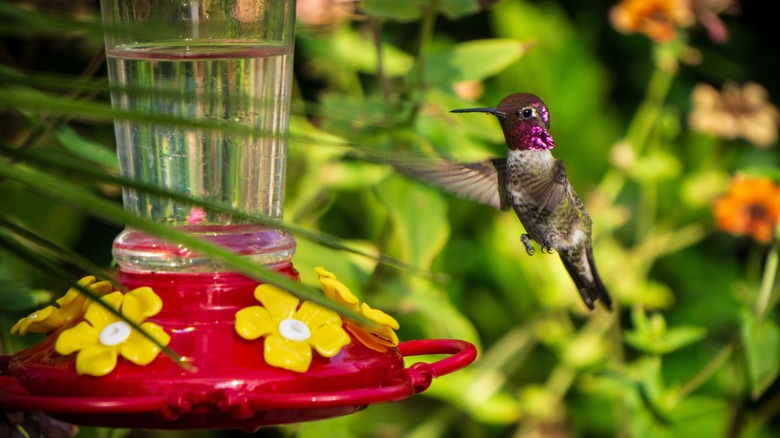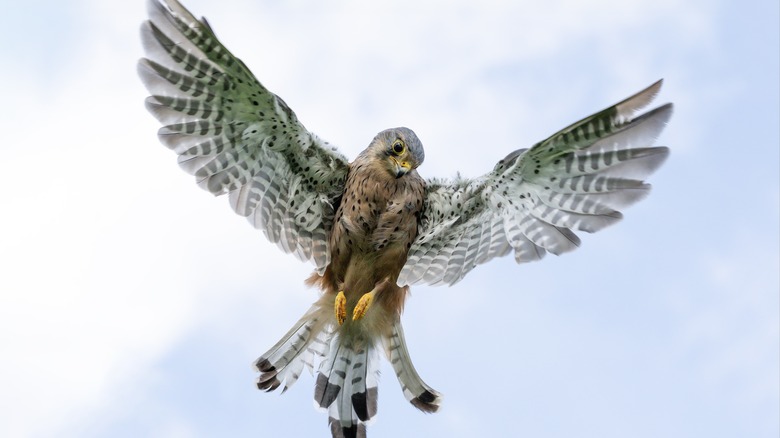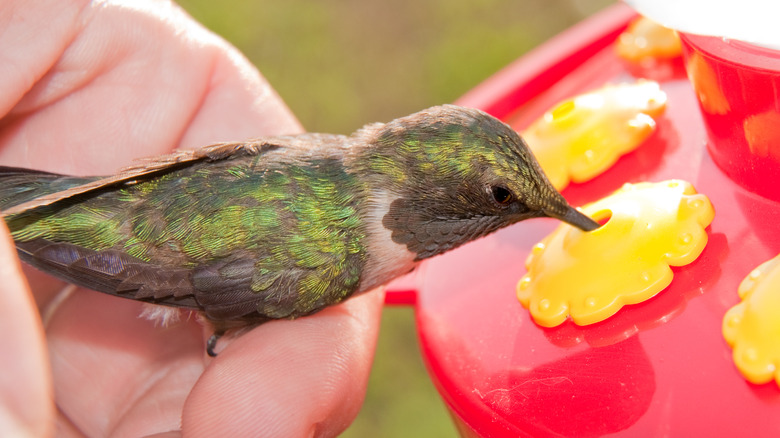Birds That Don't Mix Well With Hummingbirds
Who doesn't love hummingbirds? These glittering, dazzling miniature birds are a fan of many homeowners who often set up feeders to watch these vibrant creatures zip around, sipping nectar with their needle-like beaks before flying off to do, well, whatever it is that hummingbirds do. These miniature marvels of nature are entertaining, but what many don't realize is that location might be one of the major errors you don't want to make with hummingbird feeders, as they could be accidentally setting up an all-you-can-eat buffet for some more, well, sinister avian visitors.
Yes, we're talking about the unexpected aerial showdown that happens right in our backyards. Various birds of prey have been known to target hummingbirds, turning your peaceful backyard feeder into a hunting ground. These can include small predatory birds such as sharp-shinned hawks, American kestrels, grackles, Mississippi kites, and loggerhead shrikes, who all see hummingbirds as a tasty snack. Not to mention how even larger hummingbirds can get in on beating down their smaller kin!
What kind of birds prey on humminbirds?
While the most deadly hummingbird predator may be living in your house (we are talking about cats here) these predatory birds are not to be taken lightly. Naturally suited to catching creatures as fast and elusive as hummingbirds, hawks, shrikes, kestrels, and even gulls are pretty much perfect for hummingbird hunting. Imagine a slow-moving bald eagle trying to catch a hummingbird; it wouldn't even bother. But these smaller predators? They're built for speed and agility, making hummingbirds an easy target for them.
In the deserts of the southwest U.S., such as Arizona, New Mexico, and Texas, the greater roadrunner even gets in on the action. These opportunistic hunters will sometimes stake out a feeder, lying in wait for the perfect moment to strike. Get closer to the coast and you might even have gulls swooping down and snatching up a hummingbird as a tasty snack.
Even bigger, meaner hummingbirds can get in on the action, especially if they are defending their territory or food sources. You might think of hummingbirds as gentle little creatures, but they can be pretty aggressive, especially during breeding seasons. Some species, including the ruby-throated and rufous, are known for their aggression.
How to help protect your feathered friends
Homeowners who love their hummingbird visitors can take steps to protect them from these unexpected predators with a few simple changes around their feeders. One effective strategy is to move feeders to safer locations, even if that means you may not be able to see the hummingbirds as easily (if you can't see them, predators will have a harder time doing the same). You might want to place them closer to cover like shrubs, such as gorgeous plants, which act as hummingbird magnets, and trees, offering hummingbirds a quick escape route.
Also, installing predator deterrents, such as reflective services or decoy predators, can make a big difference. These tools can be used to scare off the real threats, giving your hummingbird friends a fighting chance or at least enough time to dip into a bush and hide until the threat has passed.
While hummingbird feeders can bring joy and incredible bird-watching opportunities, they can also attract some unwanted guests. By taking precautions and making thoughtful adjustments, you can create a safer environment for these wonderful little birds. And who knows? You might just become their favorite human in the process.


